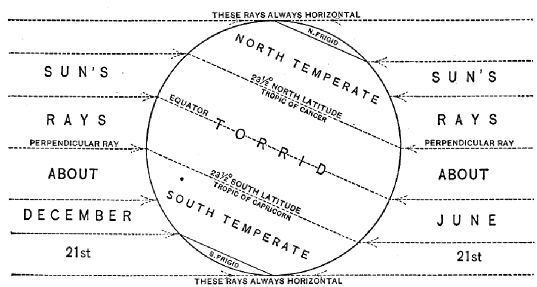2.5. Classification of Climate
If we were to compare the climates of different places on the basis of climatic elements, we would come across many such places which would have similarity between one and more of these elements. On the basis of these very regional similarities and differences of climatic elements, attempts have been made to classify climate for easy understanding, description and analysis.
Three broad approaches have been adopted for classifying climate. They are empirical, genetic and applied. Empirical classification is based on observed data, particularly on temperature and precipitation. Genetic classification attempts to organise climates according to their causes. Applied classification is for specific purpose.
Heat Zones Classification: The Greek philosophers were the first to present classification of climates. The temperature of the earth was the main bases of their classifications. They had divided the earth into Torrid, Temperate and Frigid zones.
1. Tropical or Torrid Zone: This zone lies between the Tropic of Cancer and the Tropic of Capricorn. In this zone the sunrays are almost vertical throughout the year. The temperature always remains high. There is no winter season in this zone.
2. Temperate Zone: There are two zones lying between the Tropic of Cancer - the Arctic Circle and the Tropic of Capricorn - the Antarctic Circle.

